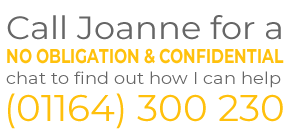The Internet of Things (IOT), and voice-activated technology such as Amazon’s Alexa and Apple’s Fall Detection Watch feature have all helped bring the possibilities of elderly home monitoring into families’ conversations about eldercare.
As technology advances, more people are using Home Monitoring Systems as part of a Care Solution for their loved ones. However, this raises ethical and moral questions and installation should never be considered without the person’s agreement.
These relatively new technologies can support older adults to remain independent. In fact, preventative solutions can even highlight changes in routine or health before a health condition or issue becomes more serious. This can prolong independence and delay the need for in-person care.
The sensors connect to the internet through a mobile network with a SIM card built into the equipment or through a broadband Wi-Fi network in the home.
A study in 2020 found that older adults, family caregivers and nurses favoured ambient sensors (those that monitor changes in health status, detect falls or monitor daily activities) over wearable devices such as personal alarms.
Most older adults, family caregivers and nurses said in-home sensors (ambient and wearable) improved home care and quality of life, prevented domestic accidents and reduced family stress.[1]
How can you keep an eye on an elderly loved one remotely?
Monitoring systems use sensors to monitor movement, behaviour, and changes in the home environment, such as temperature. Artificial Intelligence (AI), sometimes called machine learning, will analyse the data collected. Depending on the monitoring system, the insights from this data will be available to view in an app or report.
These insights can alert you to issues that need your attention.
What can home sensors detect?
Passive sensors are set up around the home. These are unobtrusive and do not require any interaction to work. As the person goes about their daily routine, they automatically collect data and send it to a central platform where it is analysed. BUt you must keep in mind a person right to privacy and dignity.
As an example, a home monitoring system may consist of:
- Door sensors to detect when the person gets up in the morning and moves out of the bedroom.
- Smart plug sensors to detect when the kettle is turned on and at what time.
- Sensors may also detect how frequently the microwave is used and how often the fridge door has been opened.
- Temperature sensors to detect unusually high or low temperatures, for example, if a window or door has been left open, or if the central heating has been left on.
- Motion sensors can detect the number of trips to the bathroom during the night, or if the person has gone into the bathroom and not returned.
- A front door sensor can detect if access to the property has been left open.
The data from these sensors could show the person is not eating or drinking as much as they previously have been, or changes in night-time behaviour.
Some solutions may include wearable monitors to track things such as heart rate or blood pressure. Whilst these may sound great, they do rely on the person to wear them and will need charging regularly.
How to choose the best home monitoring system
When choosing an elderly monitoring system, you should consider 8 main points:
- How much does it cost?
- Are there contractual obligations?
- Can you try it before you buy it?
- Is the system non-intrusive?
- How easy is it to set up or install?
- Is it reliable and what happens if something stops working?
- How reputable is the provider of the monitoring service and what is their background?
- What happens if your loved one has an emergency?
- Remember consent is vital – This is a very useful article from the Alzheimer’s Society on Consent http://bit.ly/3mKBE1c
If you would like to discuss any of these issues, please contact me:
E: enquiries@sunrisecareadvisers.co.uk
Tel: 01164 300 230
Web: www.sunrisecareadvisers.co.uk


